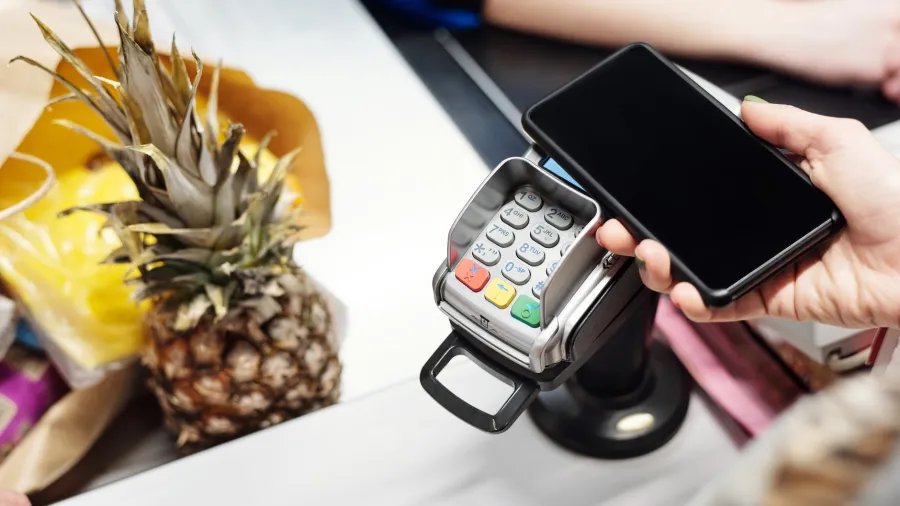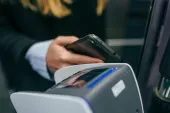
Contactless payments shift to overdrive as APAC locks down
Individuals and businesses scramble to adapt, but pitfalls remain.
One positive spin that can be taken from the ongoing coronavirus pandemic is that it accelerated the rise of the digital economy, particularly contactless payments. In Q1 2020, there was a 40% jump in contactless payments globally as customers looked for the fastest way to pay without touching cash or point-of-sale terminals, Mastercard CEO Ajay Banga said during the firm’s earnings conference call for that quarter.
As consumers grew more conscious about virus transmission through physical contact, it should no longer be a surprise that hygiene was the primary driver of the shift. A separate Mastercard study revealed that 70% of respondents globally believe that contactless is the safer way to pay, with 80% in Asia Pacific believing that it is a cleaner payment method than cash. More than half (51%) even wipe their payment cards clean after every use.
Conversely, it’s important to note that digital payment methods were already widespread in the region even before the pandemic hit, with digital payment transactions on track to exceed US$1t by 2025, according to a 2019 study by Google, Temasek, and Bain & Company. Specifically, Singapore and Australia are proving to be digitally mature markets where cashless adoption has already been on the rise, said Safdar Khan, Mastercard executive vice president & division president for Southeast Asia Emerging Markets.
A global survey conducted by the payments giant in April this year revealed that an overwhelming 76% of Singaporeans and 67% of Australians say that cashless is now their preferred way to pay, compared to 72% in the whole Asia Pacific region. These countries also showed higher willingness to forgo cash in the future (Singapore 77%, Australia 73%) compared to the rest of the region (75%).
Malaysia is also making huge strides towards going cashless with almost half (48%) making more contactless payments, Khan said, citing Mastercard’s own IMPACT Studies 2020. Thailand and the Philippines are lagging slightly behind at 33% and 38% respectively.
Chavi Jafa, Visa Asia Pacific head of business solutions, expects a 42% penetration rate for contactless payments in Vietnam and 39% in Indonesia, she told ABF in an exclusive correspondence.
Crossing barriers
Sources have acknowledged that some sectors may still be slow in letting go of their bills and coins. For example, older clients may show hesitation in adopting cashless transactions, said Standard Chartered Singapore head of retail banking Dwaipayan Sadhu. Traditions can also hinder people from going fully cashless, specifically in Singapore as a large group of clients still prefer to go to physical branches to exchange for new physical notes during Chinese New Year and Hari Raya festivities.
For Khan, the misperception that cash is free, a lack of understanding of how digital payments work, and concerns about privacy and financial information security may be turning off people from going digital. And as with any new product or service, it will always be the upper 10% who will get to try it for themselves first and afterwards growth turns speedy, noted Jafa.
“It has a lot to do with how certain countries are adopting these technologies. A great example is Australia where we saw a high level of adoption in which banks would issue contactless cards and the acceptance was not only limited to a certain number of merchants,” Jafa expounded.
Barriers notwithstanding, the cashless trend is inevitable and is here to stay. Standard Chartered noted a 30% jump YoY in volume of digital transactions made in the Lion City in March. Even their older clients are gradually hopping in on the trend; their “silver” customers aged 55 and above have been ramping up their FAST transfers by 45% YoY in Q1, and online credit card bill payments skyrocketed by over 20% YoY in the same period, Sadhu said.
But it is not just individuals who are having a difficult time conforming to the shift. The case of small and medium-sized enterprises (SMEs) must also be acknowledged when transitioning into the digital age. “SMEs have been the hardest hit in this pandemic, having been initially caught off-guard and lacking the skills, knowledge, and access they needed to take their business online at rapid pace,” Khan said.
Hailed as the “backbone” of the Asian economy, SMEs encompass more than 96% of all Asian businesses and provide two-thirds of private sector employment, according to a report by the Asian Development Bank. Yet, information problems between buyers and suppliers and high transaction costs impede sector access to cheap finance. Furthermore, the bank-dominant nature of most Asian economies make capital market financing unrealistic for small businesses.
Although the disruption is something that is not novel, one positive effect of the coronavirus to SMEs is that the adoption had to happen immediately in order for them to weather the downsides of the crisis, Sadhu explained.
For small businesses, being able to receive digital payments is just as essential as making them, Jafa said, due to customers getting more and more acclimated to e-commerce. Cash management should also be considered as businesses still have to adequately manage their working capital amidst the pandemic. On top of that, small business owners usually have limited time or resources to accumulate digital tools as most of it is spent on running their businesses and accounting for sales numbers, she noted.
Khan agrees that having access to the digital economy enables businesses to automate processes and free up resources that can be allotted to other operational aspects. To address issues regarding trust and security, businesses of all sizes should guarantee that secure digital payments will be the core focus of their operations, he said.
“By digitizing and implementing secure payments, businesses will be able to continue building trust with their consumers while driving revenues and new customer acquisitions.”
Considering these pain points, Mastercard, Visa, and Standard Chartered have all devised programmes and partnerships in order to help individuals and enterprises cope with the changing times. For instance, Mastercard have partnered with DBS in Singapore for the DBS Logistics P-Card to provide SMEs in the Lion City with a near contact-free solution for payments and collections at container depots.
Back in 2018, its global trade platform Mastercard Track was integrated into the country’s National Trade Platform which would expedite e-payments between buyers and sellers.
Visa has rolled out numerous initiatives that would assist SMEs across the region throughout the pandemic. Using the Visa Business Card, merchants can manage working capital and at the same time use it as a credit line to pay suppliers and benefit from an interest-free credit needed for a certain period of time, Jafa explained.
“The Business Card comes with data that can then be used by businesses effectively to gain further insights into their spending. It can further help reduce some of the reconciliation that may be required for them just from a business management perspective,” she added.
The firm has also collaborated with mobile shopping platforms Shopify and Boutir to help businesses establish online presence and grant them corporate and business cards with a subscription, on top of its partnership with IFundWomen to train Indian women-owned SMEs. Moreover, Visa and its partners have piloted tap-to-phone solutions in Malaysia with other APAC markets such as Australia, Hong Kong, India, Taiwan and Vietnam to follow.
For their part, Standard Chartered has rolled out CardsPal, its credit card platform venture with Mastercard, which collates all deals offered by banks and issuers in Singapore and allows a user to optimise their card spending. Whilst enabling contactless payments is not currently its focus, the bank is steadily enhancing the app to cater to customer needs, a spokesperson said.
Keeping transactions secure
With digital transformation posits a sinister underbelly: cyberattacks. The massive shift to remote working and digital banking has opened the doors to increased online attacks against the financial sector, according to a Moody’s Investors Service report. External actors have been the largest perpetrators of these attacks, inflicting 64% of data breaches compared to internal actors.
“Cyber actors most often are trying to get easily monetised data (77% of data breaches), as illustrated by the fact that wire fraud transfer remains the most common cyberattack vector,” the report said. Even if banks have quickly stepped up to these challenges, pursuing an accelerated technology development cycle has also increased their potential vulnerabilities to attacks, Moody’s added.
To combat cyber pain points and strengthen their online resilience, Khan believes that countries must apply a three-pronged approach that is appropriate for consumers, businesses and organisations: protect personal information, secure all digital transactions, and help entities defend themselves against attackers.
“We have long been committed to protecting people at every point in a transaction journey. This has been at the core of what we do and has enabled us to successfully create and implement innovative technologies, solutions, and measures, including leading EMVCo standards such as tokenization and authentication,” he explained.
In order to establish trust in digital tools, businesses also have to be open and communicative to their customers. Enterprises should put customers’ interests first and exemplify in their recovery processes how issues are resolved, Sadhu stated.
“Standard Chartered Singapore, for instance, sends regular updates to clients on what the bank is doing to protect their finances and gives tips on how clients can better protect themselves from financial crimes,” he expounded.
Another key to maintaining trust is for a business to provide a convenient adoption to its customers, with the confidence that it's going to be end-to-end secure for them, Jafa said. Visa continues to hold talks with its banking partners as a way of sharing business practices on how to improve cybersecurity, and have been increasingly working on their tokenisation capabilities as a response to rising e-commerce transactions.
“It's very important, especially when we're thinking about first time users of digital payments, that we're also first time acceptors of digital payments. It's very important that businesses are aware of the different social engineering schemes, it's important that they know what the risks are and it's important that they understand.”
Photo courtesy of Pexels.com.



















 Advertise
Advertise










